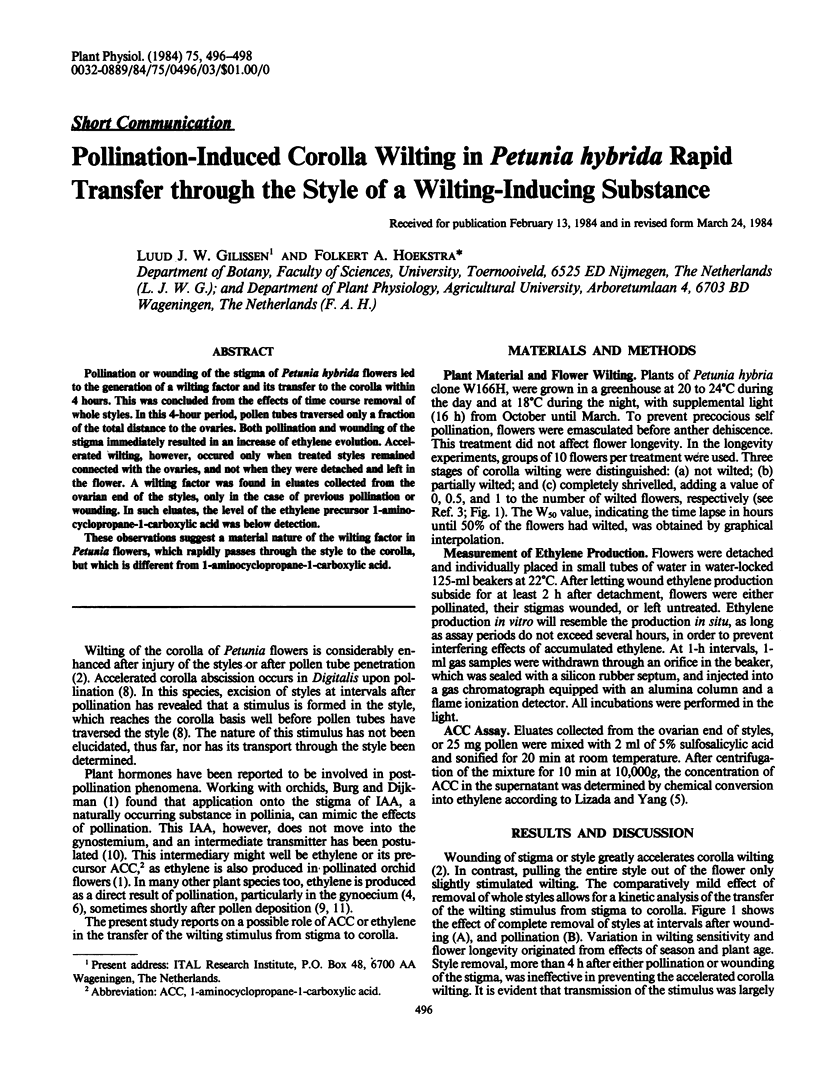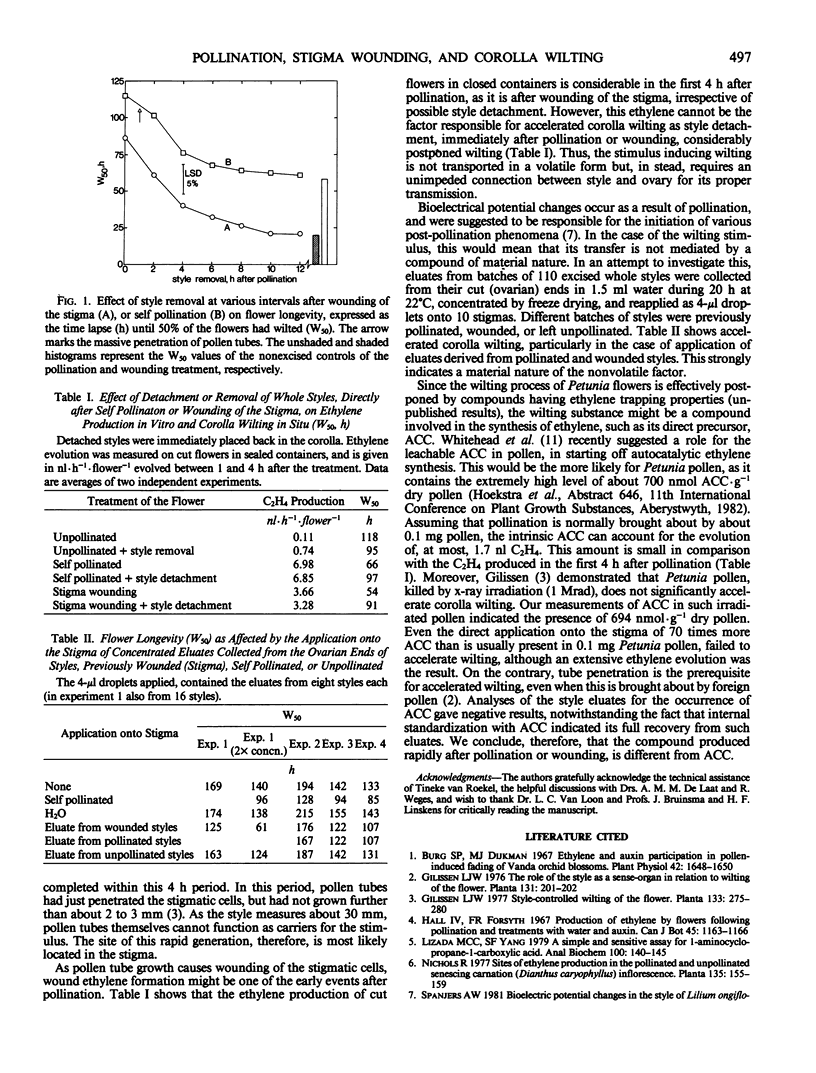Abstract
Pollination or wounding of the stigma of Petunia hybrida flowers led to the generation of a wilting factor and its transfer to the corolla within 4 hours. This was concluded from the effects of time course removal of whole styles. In this 4-hour period, pollen tubes traversed only a fraction of the total distance to the ovaries. Both pollination and wounding of the stigma immediately resulted in an increase of ethylene evolution. Accelerated wilting, however, occured only when treated styles remained connected with the ovaries, and not when they were detached and left in the flower. A wilting factor was found in eluates collected from the ovarian end of the styles, only in the case of previous pollination or wounding. In such eluates, the level of the ethylene precursor 1-amino-cyclopropane-1-carboxylic acid was below detection.
These observations suggest a material nature of the wilting factor in Petunia flowers, which rapidly passes through the style to the corolla, but which is different from 1-aminocyclopropane-1-carboxylic acid.
Full text
PDF


Selected References
These references are in PubMed. This may not be the complete list of references from this article.
- Burg S. P., Dijkman M. J. Ethylene and auxin participation in pollen induced fading of vanda orchid blossoms. Plant Physiol. 1967 Nov;42(11):1648–1650. doi: 10.1104/pp.42.11.1648. [DOI] [PMC free article] [PubMed] [Google Scholar]
- Lizada M. C., Yang S. F. A simple and sensitive assay for 1-aminocyclopropane-1-carboxylic acid. Anal Biochem. 1979 Nov 15;100(1):140–145. doi: 10.1016/0003-2697(79)90123-4. [DOI] [PubMed] [Google Scholar]


